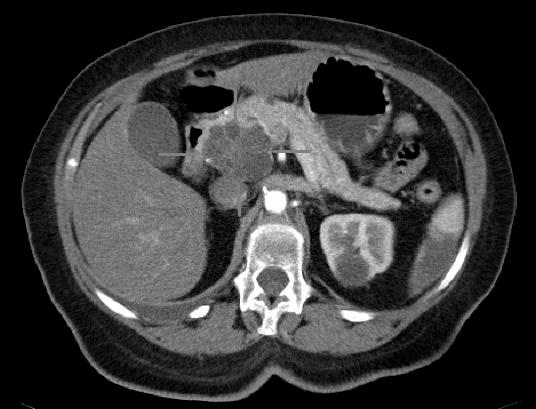A new study from Queen Mary University of London has demonstrated that immune cells can be stimulated to assemble into special structures within pancreatic cancer such that, at least in a pre-clinical model, researchers can demonstrate an improvement in the efficacy of chemotherapy.
The body’s immune system is a critical defense against illness such as infections, as has been highlighted by the recent COVID-19 pandemic. The same immune system can also help us fight cancer. However, pancreatic cancer is different; a key feature of this cancer type is that the pancreatic cancer cells are surrounded by a dense, impenetrable barrier known as the stroma, which often blocks the access of immune cells to the tumor. For this reason, immunotherapies—drugs that harness the power of the body’s immune system to kill cancer cells—have shown limited success in the treatment of pancreatic cancer, whilst they are effective in fighting other cancer types including skin and lung cancer.
Research has found that in some patients with pancreatic cancer, immune cells can assemble into clusters known as tertiary lymphoid structures (TLS) within the stroma, which are associated with improved survival outcomes in patients. However, TLS do not form naturally in all patients with pancreatic cancer. With this in mind, in this study the team set out to investigate the structure and role of TLS in pancreatic cancer when present, and to evaluate their anti-tumor activity.
The research was published in Cellular and Molecular Gastroenterology and Hepatology, and funded by Cancer Research UK, Pancreatic Cancer Research Fund and Medical Research Council.
To determine the presence of TLS within human pancreatic cancer, the team analyzed tissue samples donated by patients to the Pancreatic Cancer Research Fund Tissue Bank. In this study, TLS were defined by the presence of tissue zones rich in B cells, T cells and dendritic cells—three cell types that have an important role in the immune response. By using specialized staining techniques to visualize the different cell types present within the samples, the team found that TLS were only in a third of patients whose samples were analyzed.
To study the development of TLS in pancreatic cancer, the team generated a pre-clinical murine model of pancreatic cancer. TLS were not present in the model initially; however, following the injection of two signaling proteins (known as lymphoid chemokines) into the tumors of the mice, B cells and T cells infiltrated into the tumor site and assembled into TLS.
TLS induction can improve the effectiveness of chemotherapy
The team then combined the chemokine injection with administration of gemcitabine—a chemotherapy commonly used in the treatment of pancreatic cancer patients. The combination of gemcitabine and chemokine injection resulted in smaller tumors in mice, an effect that was not achieved by either treatment alone.
Hemant Kocher, Professor of Liver and Pancreas Surgery at Queen Mary University of London and consultant at Barts Health NHS Trust, who led the study, said: “Pancreatic cancer is known as a cold tumor, which means it does not have many immune cells near the cancer trying to fight it. In this study we have shown that immune cells can not only be harnessed but also made to assemble into TLS within a pre-clinical model of pancreatic cancer to make chemotherapy more effective.”
“Formation of TLS is critical in mounting the anti-tumor response close to the tumor to overcome the problem posed by the barrier of the stroma. These findings suggest that combining chemotherapy with appropriate immunotherapy to stimulate immune cells in the tumor microenvironment could be used to tailor more personalized treatments against pancreatic cancer.”
The anti-tumor activity seen after TLS formation in the pre-clinical model was associated with B cells triggering the activation of dendritic cells, which is required for the initiation of an immune response. The findings suggest that lymphoid chemokines, when used in combination with chemotherapy, may represent a viable therapeutic strategy for promoting an anti-tumor immune response that could lead to better clinical outcomes.
As this study used a mouse model, further research is now required to determine whether the same outcomes can be observed in other experimental models and in patients. The team believe that a more detailed understanding of TLS formation may aid in the development of personalized therapies that can harness the potential of the body’s own immune system to fight cancer.
Using genetically engineered T cells to fight pancreatic cancer
More information:
Francesca R. Delvecchio et al, Pancreatic cancer chemotherapy is potentiated by induction of tertiary lymphoid structures in mice, Cellular and Molecular Gastroenterology and Hepatology (2021). DOI: 10.1016/j.jcmgh.2021.06.023
Provided by
Queen Mary, University of London
Citation:
Immune cells assemble to boost the effects of chemotherapy in pancreatic cancer (2021, July 9)
retrieved 11 July 2021
from https://medicalxpress.com/news/2021-07-immune-cells-boost-effects-chemotherapy.html
This document is subject to copyright. Apart from any fair dealing for the purpose of private study or research, no
part may be reproduced without the written permission. The content is provided for information purposes only.



